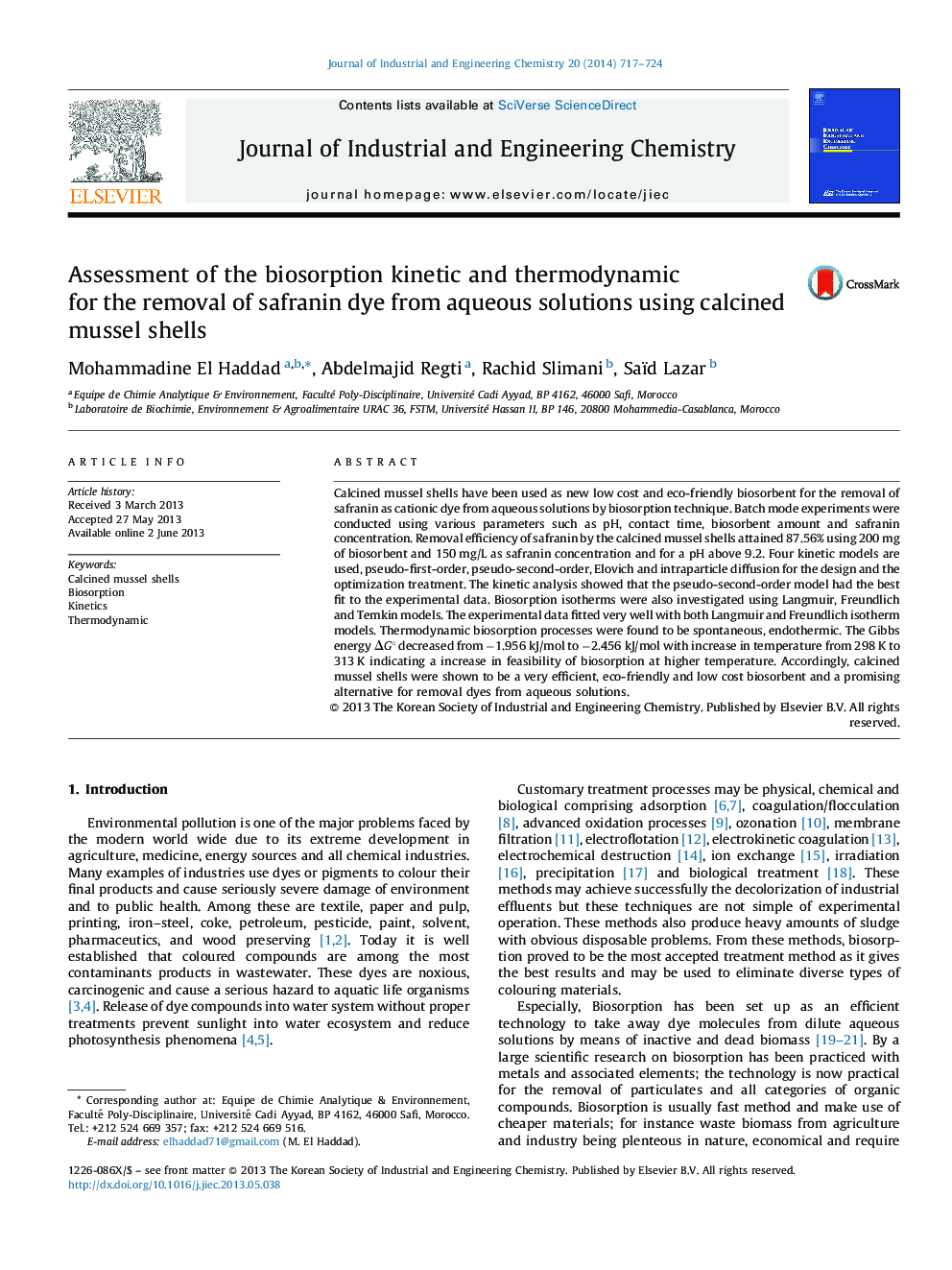| Article ID | Journal | Published Year | Pages | File Type |
|---|---|---|---|---|
| 228958 | Journal of Industrial and Engineering Chemistry | 2014 | 8 Pages |
Calcined mussel shells have been used as new low cost and eco-friendly biosorbent for the removal of safranin as cationic dye from aqueous solutions by biosorption technique. Batch mode experiments were conducted using various parameters such as pH, contact time, biosorbent amount and safranin concentration. Removal efficiency of safranin by the calcined mussel shells attained 87.56% using 200 mg of biosorbent and 150 mg/L as safranin concentration and for a pH above 9.2. Four kinetic models are used, pseudo-first-order, pseudo-second-order, Elovich and intraparticle diffusion for the design and the optimization treatment. The kinetic analysis showed that the pseudo-second-order model had the best fit to the experimental data. Biosorption isotherms were also investigated using Langmuir, Freundlich and Temkin models. The experimental data fitted very well with both Langmuir and Freundlich isotherm models. Thermodynamic biosorption processes were found to be spontaneous, endothermic. The Gibbs energy ΔG° decreased from −1.956 kJ/mol to −2.456 kJ/mol with increase in temperature from 298 K to 313 K indicating a increase in feasibility of biosorption at higher temperature. Accordingly, calcined mussel shells were shown to be a very efficient, eco-friendly and low cost biosorbent and a promising alternative for removal dyes from aqueous solutions.
Graphical abstractFigure optionsDownload full-size imageDownload as PowerPoint slide
